
Review on Argon ONE M.2 Raspberry Pi SSD Board (Expansion Board ONLY) - Supports B-Keys and B+M Keys - Exclusive Compatibility with Argon ONE V2 Raspberry Pi 4 Cases by Joseph Whiteman

Disappointing compared to the Argon ONE case
I bought an Argon 1 case without an M.2 base and initially planned to use a microSD card. However, I have found that my applications are doing a lot of writes to the card. Knowing that constant writing can cause unexpected crashes on micro SD cards, I decided to try this expansion base - I paired it with a PNY 500GB SATA M.2 SSD. Unfortunately, I think the shortcomings of this expansion bay make it difficult to sell compared to external USB SSDs. At a high level, I am dissatisfied with: • fit and finish; , and loss of access to the SSD cardFirst - adjust and that's it. It looks like the plastic on it hasn't been cut as well as on the "original" Argon case. Nothing bad, but certainly uncomfortable when doing something like a paper cut. Problem solved with 600 grit sandpaper to round the edges. Pretty acceptable fit and finish for a cheap product but not a great first impression. I was also dismayed to find that the microSD card slot was blocked by the adapter - I believe the circuit board may have been designed differently to keep the microSD card accessible. SATA M.2 SSDs. While NVMe SSDs may be more powerful, with the Pi 4 you are limited to the USB 3.0 interface - many of NVMe's performance benefits are not visible to the end user. However, NVMe drives are becoming more mainstream and M.2 SATA SSDs are becoming more niche – as of Q2 2021, NVMe drives are approaching price parity with M.2 SATA SSDs. 180 Degree USB Adapter: I've had a lot of problems with this. I had problems cloning my SD card to it, writing a new image to the HDD, etc. To solve this problem I bought a 3ft USB-A to USB-A adapter (which is not the design requirements) and solved the problem. Problem. It appears that this USB 3.0 adapter is either not working or is inconsistent enough to cause boot and write issues. Thermal: The standard baseplate has vents that allow the argon fan to draw in fresh air. The M.2-based PCB blocks most of this airflow, increasing the temperature on the Pi. Also, the bottom plate is so thin that installing an SSD heatsink is difficult. I bought the thinnest SSD heatsink I could get and it rests on the continuous legs on the I/O board. I had to use Kapton tape to prevent short circuits. If the base of the M.2 was another 2-3mm higher, this wouldn't be a problem. Finally, there is no temperature sensor on the M.2 board, so with poor ventilation and limited heat dissipation options, it is difficult to quantify the risk. Looking back, I'd like to use an external USB-C NVMe or 3.5. SATA enclosure. With a few command bars I could have a pretty compact platform and a lot of flexibility.
- Great design
- Too long to wait
New products
Comments (0)
Top products in 🖥️. Single Board Computers
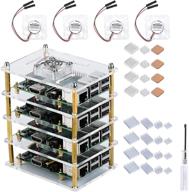
GeeekPi Raspberry Pi Cluster Case with Cooling Fan and Heatsink for Pi 4 Model B, 3 Model B+ & 3/2 Model B

11 Review

55" TV LG OLED55C2RLA 2022 HDR, OLED, dark titanium

38 Review
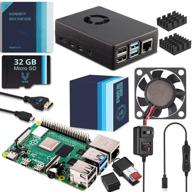
Vilros Raspberry Pi 4 4GB Complete Starter Kit - Black Fan-Cooled Aluminum Case for Heavy-Duty Performance

12 Review
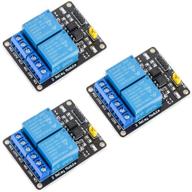
🌐 MCIGICM 2 Channel DC 5V Relay Module: Optocoupler Low Level Trigger Expansion Board for Arduino UNO R3, DSP, ARM, PIC, AVR, STM32, Raspberry Pi

11 Review
Another interesting products
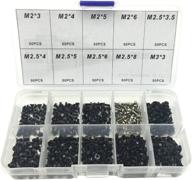
Comprehensive 500pcs Laptop Screw Kit Set for 🔩 IBM HP Dell Lenovo Samsung Sony Toshiba Gateway Acer

12 Review
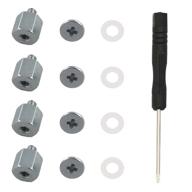
M.2 Screw Kit: Easy Mounting for NVMe SSDs on ASUS Motherboards

19 Review
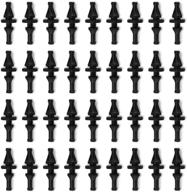
36-Pack Black Rubber PC CPU/Case Fan Screws/Rivets Set for Computer

11 Review

MacBook Retina 13-inch (A1425, A1502) and 🔩 15-inch (A1398) Bottom Case Screw Set with Pentalobe Screwdriver

11 Review

